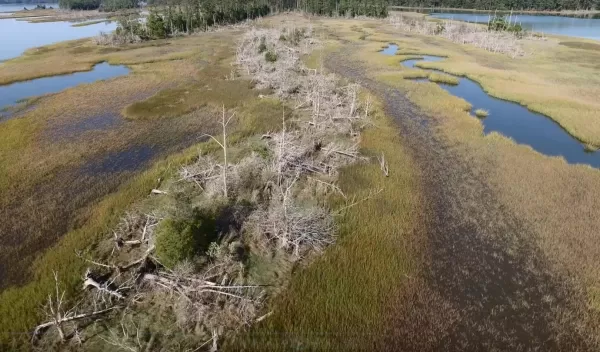
'Ghost forests' show visible results of changes in climate
Sea level rise will have the greatest impacts on rural land in places where knowledge is insufficient to best inform decisions about encroaching marshlands, according to a review published in the journal Nature Climate Change: Sea-level driven land conversion and the formation of ghost forests.
The decisions involve complex tradeoffs in the value of land uses. Many landowners see upland-to-wetland conversion as an economic loss, but wetlands provide valuable ecosystem services by improving water quality, supporting marine fisheries, and protecting against flooding.
The paper is the first to synthesize studies of land conversion driven by sea level rise. One of the clearest signs of this conversion are "ghost forests": stands of dead trees with new marshlands surrounding their bleached trunks.
"Ghost forests are one of the most prominent indicators of climate change," says lead author Matt Kirwan of the Virginia Institute of Marine Science. "Submergence of rural land -- marked by ghost forests and abandoned farm fields -- is ecologically and economically important, and globally relevant to the survival of coastal wetlands."
Adds Mike Sieracki, a program director in NSF's Division of Ocean Sciences, which funded the research, "As oceans rise, coastal landforms and ecosystems will change. This study demonstrates that ghost forests are an early, visible consequence of sea level rise."


